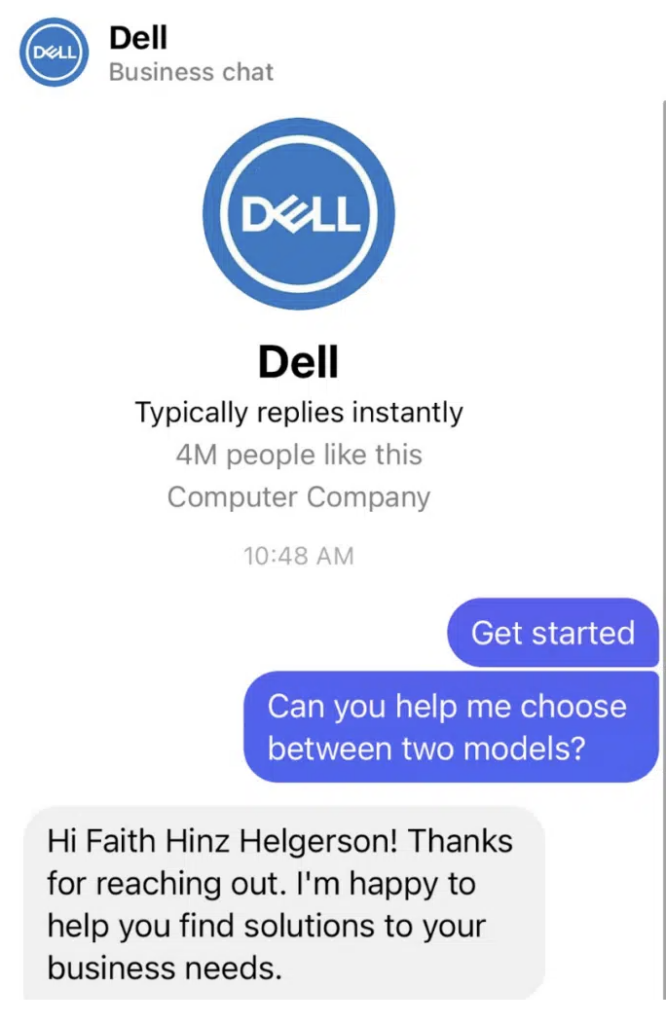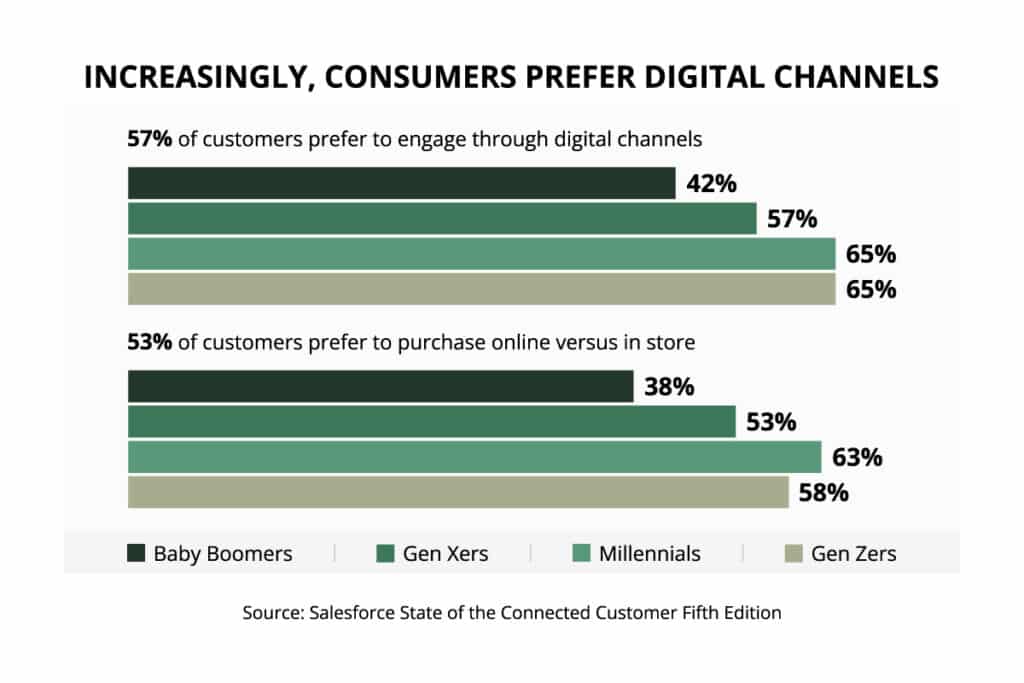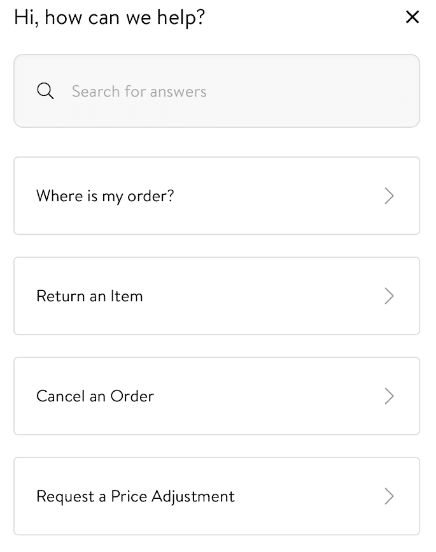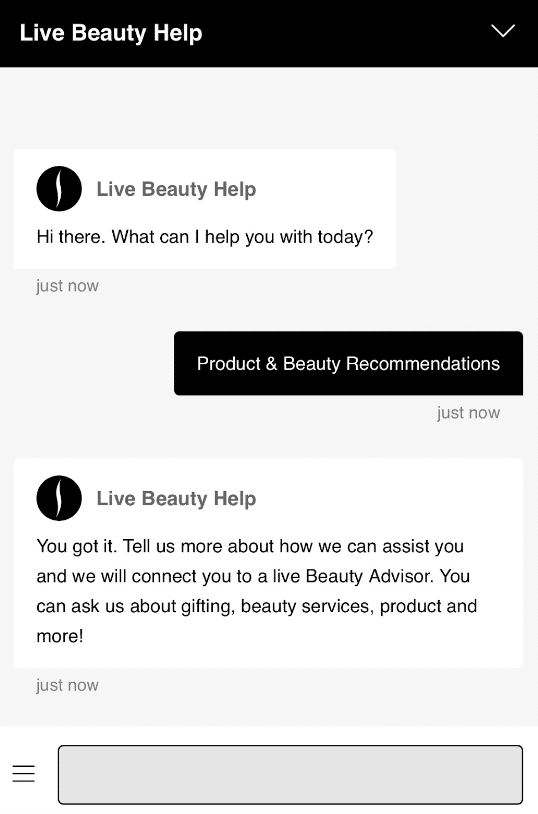The Real ROI of Conversational Commerce

Winning and retaining customers is no easy feat. Modern consumers have countless options across all product and service categories. And many aren’t afraid to ditch a once-beloved brand when something better comes along. In fact, in the last year alone, nearly three-quarters (71%) of consumers say they’ve switched brands at least once.
There are a number of strategies, tactics, and solutions available to brands – each promising to make it easier to attract, convert, and retain customers in today’s market. Some are little more than a flash in the pan. But others are proven to deliver big results.
Conversational commerce is the latter.
Before investing time and resources in a new strategy, tactic, or tool, it’s important to understand the potential impact of that investment. This is especially true in today’s economic climate when budgets are tight.
In this post, we’ll cover off on the key benefits winning brands are experiencing by embracing conversational commerce.
Benefit #1: Delivering Outstanding Customer Experiences That Fuel Sales Growth

Delivering great products and services will always be important. But today, brands must also focus on delivering great experiences. After all, a staggering 88% of consumers say experience matters as much as products and services.
If you consistently deliver great experiences, you’ll grow sales and loyalty. If you don’t you’re sure to lose business. According to research from PWC, 59% of consumers will switch brands after several bad experiences – even if it’s a brand they love; 17% will ditch the brand after just one bad experience.
In today’s competitive market, brands can’t afford NOT to deliver winning experiences that meet customers’ expectations.
But what exactly are those expectations?
For starters, consumers expect to be able to interact with a brand whenever and wherever a need arises. Salesforce research tells us 83% of consumers expect instant engagement when they contact a company.
Increasingly, consumers are leveraging messaging channels to engage with brands. And they expect these interactions to be personalized and seamless. 66% of consumers expect brands to understand their unique needs and expectations.
Yet all too often, customer experiences are generic and disjointed. In fact, 66% of consumers say that in general, it feels like they’re communicating with separate departments, rather than a single company. However, brands that embrace conversational commerce are equipped to connect with consumers whenever and wherever the need arises – via their preferred channels. With conversational commerce, brands can deliver personalized experiences throughout the purchase journey – fueled by the centralized data available about each customer.
In addition, conversational commerce transcends silos and blurs lines between departments. The result? A seamless experience across all channels.
Today, consumers demand outstanding experiences. Delivering on these expectations is a powerful way to stand out from the competition. By embracing conversational commerce, brands are well-positioned to deliver winning experiences that attract, convert, and retain customers – and boost the bottom line.
Benefit #2: Time Savings
Sure, consumers demand personalized, seamless experiences throughout the purchase journey. But meeting these expectations every single time can be difficult – not to mention time-consuming. There are only so many minutes in the day (1,440 to be exact)!
Increasingly, consumers prefer digital channels – including conversational commerce – to engage with brands. Per Salesforce, 57% of consumers prefer to engage with brands via digital channels. This number is even higher – 65% among Millennial and Gen Z shoppers.

Increasingly, Consumers Prefer Digital Channels
Source: Salesforce State of the Connected Customer Fifth Edition
More cases are originating via digital channels – and conversational commerce specifically. Yet, customer care headcounts remain flat. In fact, with the mass layoffs of the last year or so, many customer care teams have actually shrunk.

In other words, brands are expected to do a whole lot more – with a whole lot less.
Human interaction is a key component of conversational commerce. However, relying solely on humans to power your strategy isn’t practical. Delivering great experiences takes time – which most teams don’t have a lot to spare.
That’s why the best brands are making artificial intelligence (AI) a key tenet of their conversational commerce efforts. By leveraging AI, you can provide great experiences any time of day – without sinking a ton of time into doing so.
For example, a simple chatbot – such as an Einstein Bot – can be easily created and deployed to answer simple questions, complete routine tasks, and point customers to additional information. This lightens the load for customer care teams, freeing them up to focus on more complex tasks.
AI has a long way to go – and consumers are embracing it. Salesforce research found that 69% of consumers are open to using AI to improve their experiences. And 65% would rather help themselves through self-service for simple issues.
AI can be a game changer for businesses. In fact, there’s so much potential for AI, that it was a key focus of Salesforce Connections 2023. By incorporating AI into your conversational commerce strategy, you can deliver winning, round-the-clock experiences your customers love – while saving a whole lot of time.
Benefit #3: Cost Savings

It’s no secret we’re in the midst of economic uncertainty. At some organizations, headcounts and budgets remain flat. At other organizations, budgets, and headcount have been cut – sometimes by a lot.
As such, many brands are focused on finding ways to save money – while still meeting consumers’ lofty expectations. Enter conversational commerce.
As we’ve already explored, conversational commerce drives some powerful efficiencies. These don’t just save time; they also save money.
Chatbots once required a huge investment in development resources. But today, great chatbots like Einstein Bots are much easier to develop and deploy. That means you don’t have to sink a lot of time into creating your own.
What’s more, AI can accurately and efficiently address some of the most common inquiries coming in through your conversational commerce channels. That means you don’t have to spend a ton of money hiring additional resources. And the resources you do have can focus on higher value activities that drive revenue.
The bottom line? With conversational commerce, your brand can authentically engage with customers throughout the purchase journey – and save money.
Supercharge Your Conversational Commerce Strategy with 1440
Conversational commerce is an effective way to connect with consumers across all generations. By embracing conversational commerce, brands can deliver great customer experiences – which leads to a boost in sales and retention. In addition, conversational commerce drives efficiencies that can help brands save both time and money.
But managing conversational commerce can seem overwhelming. There are so many different conversational commerce channels – from messaging apps to social media messaging to SMS – and everything in between. Traditionally, each of these channels is managed through a separate platform, which makes it nearly impossible to deliver the timely, connected experiences consumers expect.
Increasingly, brands are opting to streamline conversational commerce into a single platform. If Salesforce is the platform you use to run your business, it’s the best place to manage conversational commerce, too.
1440 empowers brands to deliver timely, personalized messaging experiences across channels – all without leaving Salesforce. With 1440, you can save time and money – while delivering great experiences that convert and retain customers.
Ready to see our solutions in action? Contact us to schedule a live, personalized demo today.